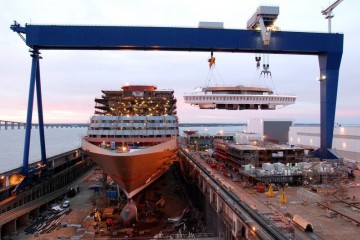Shipping’s carbon emissions were quite effectively branded “the elephant in the room” last year during the negotiations that led to the Paris Climate Agreement. Are shipping emissions indeed the elephant in the room, or rather another kind of animal? Perhaps an ostrich that puts its head in the sand? A parrot that repeats phrases that he has heard somewhere? Or a tortoise known for its slowness?
Shipping was definitely the elephant in the room last year. Some studies predicted that shipping’s carbon emissions could increase with 250% by 2050, not exactly the right direction if the goal is to reduce global temperature rise to “well below” 2 degrees C. Yet shipping was not discussed, not included in nation’s Nationally Determined Contributions, nor mentioned in the text of the agreement. Like in the Kyoto agreement, the predecessor of the Paris agreement, dealing with shipping emissions was left to the IMO. So if it was an elephant it was actually already in the room.
Some would say shipping emissions are an ostrich. Head in the sand and the fanciful fad of climate change will go away. “No targets for shipping because this will harm global trade”, “suggestions of targets are wholly inappropriate”. After the Paris agreement the tone has changed: “climate change is top priority for shipping” and the sector organisation ICS has even proposed to come to some sort of a target. So if it is an ostrich, it has put its head out of the sand, at least for now.
Whoever has the slightly dubious habit – like me – to attend shipping conferences, will recognise the parrot. No conference or brief conversation is truly maritime if it does not mention “global rules for global industry”, “level playing field ” and “leave it to IMO”. When it comes to shipping emissions, a few phrases can be added like “we have the three-step procedure” and “we already have EEDI”. The “How to bluff your way into shipping” could simply consist of these five phrases. But there are some indications that this is changing; finally a real discussion on shipping emission seems to emerge.
How about the last animal, the tortoise? Well, shipping certainly has its own rhythm. The discussion on a target for shipping will, in any case, not be finalised before the end of 2017, two full years after the Paris agreement. Measures, such as the Energy Efficiency Design Index (yes, EEDI) take a long time before they show substantial impacts; and things like a carbon tax cannot be expected soon, due to the “three-step approach” that stipulates that a global fuel consumption data collection need to be created, before analysis and decision-making can take place. So of all the four animals, shipping is most and foremost a tortoise. Some will point out that the tortoise beat the hare. Others will remark that this is just a fable.
3 Comments
Comments are closed.




I think quick economic measures of impact are needed, in order to turn shippers (and ports) into roadrunners…
SOX NOX and PM – shipping is killing vast numbers of people besides seafarers as long as it continues to use HFO.
Maritime Commentator
Hello, I like this article! I am researching carbon emission strategies in the sea freight sector for my Master’s degree. If any of your readers would like to contribute, here is the link to my online survey, you don’t need your own ship! surveymonkey.co.uk/r/shipTC